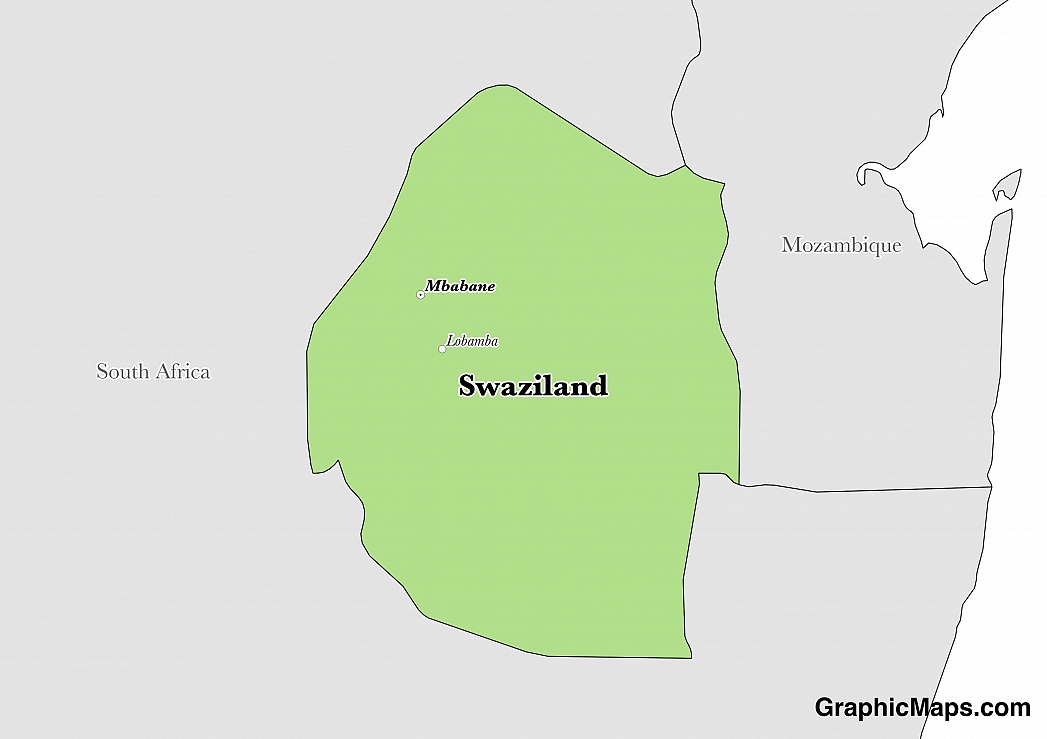The official languages of Swaziland are English and Swazi (also known as Swati by local speakers). English, which belongs to the Indo-European language family, is primarily used for government communication and educational instruction. Parliamentary meetings take place in both languages, however. Swazi, the indigenous language of the Swazi people, belongs to the Niger-Congo language family and Bantu subgroup. It is written with the Latin alphabet, which is the same as that used for the English language. The Swazi language tends to be used by media outlets, such as television, radio, and print. Most individuals who speak and understand English can be found in the capital of Swaziland.
Of the 2 official languages of Swaziland, the most widely spoken is Swazi. A population size of around 980,000 individuals reports this as their first language, which represents a large percentage of the population. English, on the other hand, is only spoken by around 57,500 people and only 7,500 of these individuals claim it is their native tongue. Zulu, which is not an official language, is actually the second most widely spoken in Swaziland. Around 76,000 individuals report speaking this indigenous language, which is native to the Zulu people.
Planning a trip to Swaziland should involve learning some useful phrases in Swazi to be able to communicate with the local population. Some common greeting include: “hello” (sawubona), “how are you” (unjani), “I am fine” (ngikhona), and “good morning” (kusile). Polite expressions include: “please” (ngiyacela), “thank you” (ngiyabonga), and “you’re welcome” (wamukelekile).
In addition to English, Swazi, and Zulu, Swaziland is home to a number of other minority languages. Afrikaans and Tsonga are native to Africa. Afrikaans was developed from the Dutch language and several borrowed phrases from languages like Khoisan, Bantu, and Portuguese. Swaziland has around 13,000 Afrikaans speakers. The Tsonga language belongs to the Bantu language family and has around 19,000 speakers. Some immigrant languages have also made their way into Swaziland. These include: Sotho, Maore, and Nyanja. All of these immigrant languages belong to the Bantu language family.
This page was last modified on May 1st, 2018
More on Graphicmaps

Published on 2019-11-06
What is a Trade Embargo?

Published on 2019-11-04
Which Two Countries Used to Have the Same Flag?

Published on 2019-09-16
What Is the Only Two-Sided State Flag?

Published on 2019-09-16
Which Country Flag Looks Like the Texas Flag?

Published on 2019-08-29
Flags That Resemble the US Flag

Published on 2019-08-20
